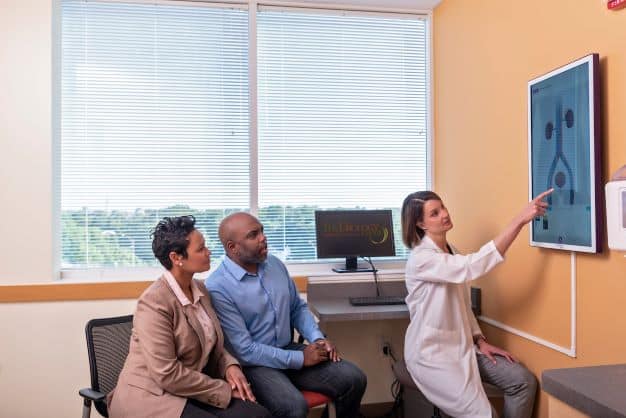Most people have had to pee in a cup as part of a regular health check, but what kinds of results would require the patient to see a specialist? And exactly what would that specialist do?
Meet your friendly urologist. Nearly 14,000 of us are practicing the United States, but that’s only about four specialists for every 100,000 people. This means most people do not see a urologist as frequently as they do their family physician, dentist, or even ophthalmologist. However, for a significant percentage of Americans, a urologist can be a major life enhancer, if not life saver.
What a Urologist Does: From Kidneys to Prostate
Urologists are specially trained to treat conditions of the male and female urinary tracts and reproductive organs.
This requires expert understanding of the following organs and body parts, from top to bottom:
- The kidneys –Two filtering organs positioned below the ribs at each side of the spine. This is where the urinary tract begins, as well kidney stones.
- The ureters – Two tubes through which urine passes from the kidneys to the bladder. A more severe urinary tract infection can travel up to the ureters.
- The bladder – Pear-sized organ located behind the pelvis. The bladder can store up to two cups of urine and therefore is expandable. Overactive bladder and incontinence (female and male) are common bladder conditions.
- The prostate – A small gland at the base of the penis. The prostate begins a slow, steady growth period at about the age of 25, which can contribute to an enlarged prostate and make the gland more vulnerable to prostate cancer.
- The urethra – The tube through which urine and semen travel to escape the body. The urethra is where urinary tract infections (UTIs) tend to start, and also may reveal signs of hematuria, or blood in the urine from the kidneys, ureters, bladder, prostate, or urethra.
- The pelvic floor – The network of muscles and ligaments in the pelvis that hold a woman’s bladder, uterus, and other organs in place. When these muscles are weakened, it can lead to pelvic floor prolapse.
- The penis – The male sexual organ. Erectile dysfunction, or the inability to sustain an erection for sexual intercourse, is the most common sexual ailment reported by men. A less-common condition, called Peyronie’s disease, causes curvature of the penis that can be painful.
Here’s When You Might Need a Urologist
The most common symptoms of urinary tract conditions involve changes in urination and the reproductive systems. However, when it comes to some conditions, a patient shouldn’t wait to experience symptoms. Here are four guidelines of when you may choose to see a urologist.
- If you are older than 40. Men should begin having regular prostate screenings once they reach age 50, unless they are at high risk and then it’s 45. Incidents of prostate cancer and enlarged prostate can climb at this time. Also, the risk of developing bladder cancer (in both men and women) rises 16-fold from the age of 40 to 80.
- Women who have had children or are post-menopausal. Childbirth increases the risks of pelvic floor weakness, overactive bladder, and incontinence. Women who are past the menopause stage are more likely to experience vaginal atrophy, which can interfere with intimacy, as well as cause overactive bladder and incontinence.
- Men who want a vasectomy. This common sterilization procedure for men is safe and considered permanent, but does not diminish a man’s ability to perform sexually – it doesn’t even change the look of semen. Nearly half a million men seek this procedure each year. For men interested in having a vasectomy, The Urology Group now offers nitrous oxide, or “laughing gas,” to help patients relax during this 20-minute procedure.
- If you experience any persistent changes in urination. If the number of times you urinate daily changes noticeably, if it is harder to start or stop, if there is any discomfort during urination, and/or if your urine stream looks abnormal in color, make an appointment to see a urologist. These can be red flags for something serious.
If You Can’t Wait to Pee, You Shouldn’t Wait to Schedule
As with most conditions, the earlier you treat a urologic condition, the better. If you plan to see a urologist, now is a good time to give us a call.

